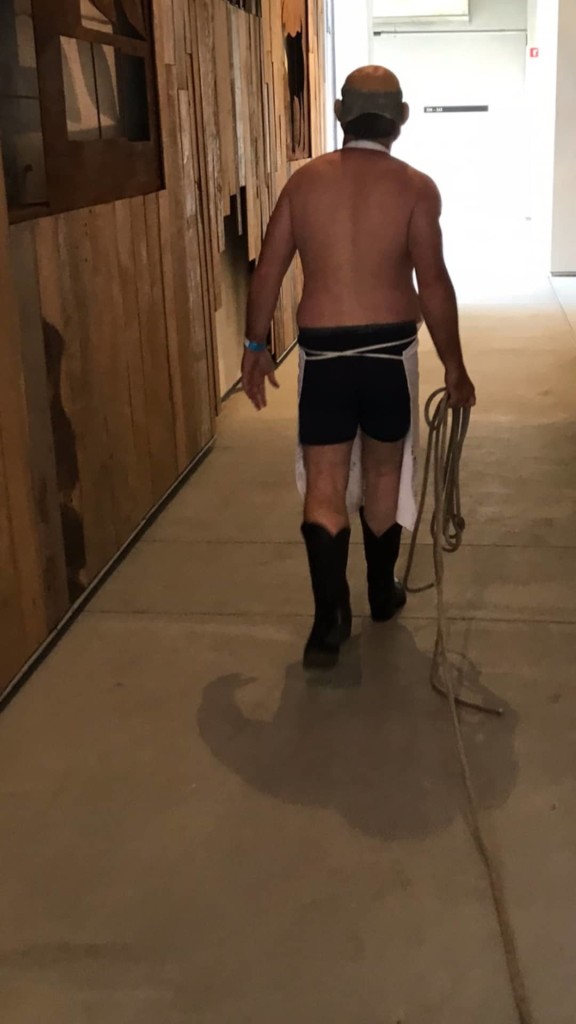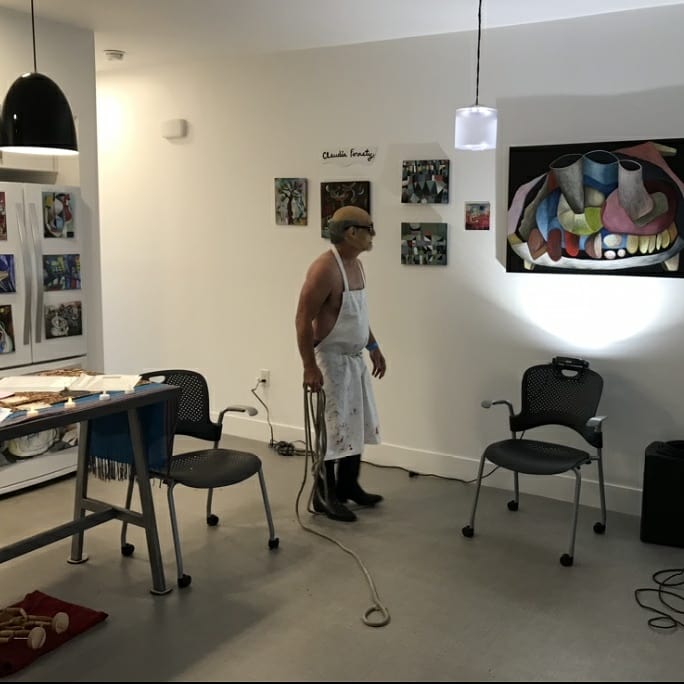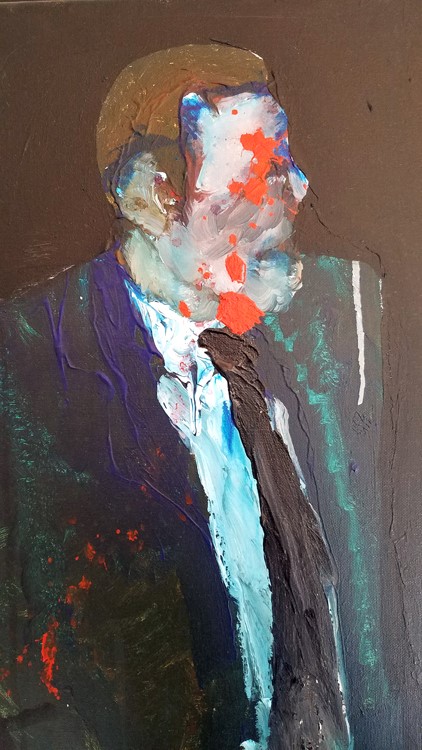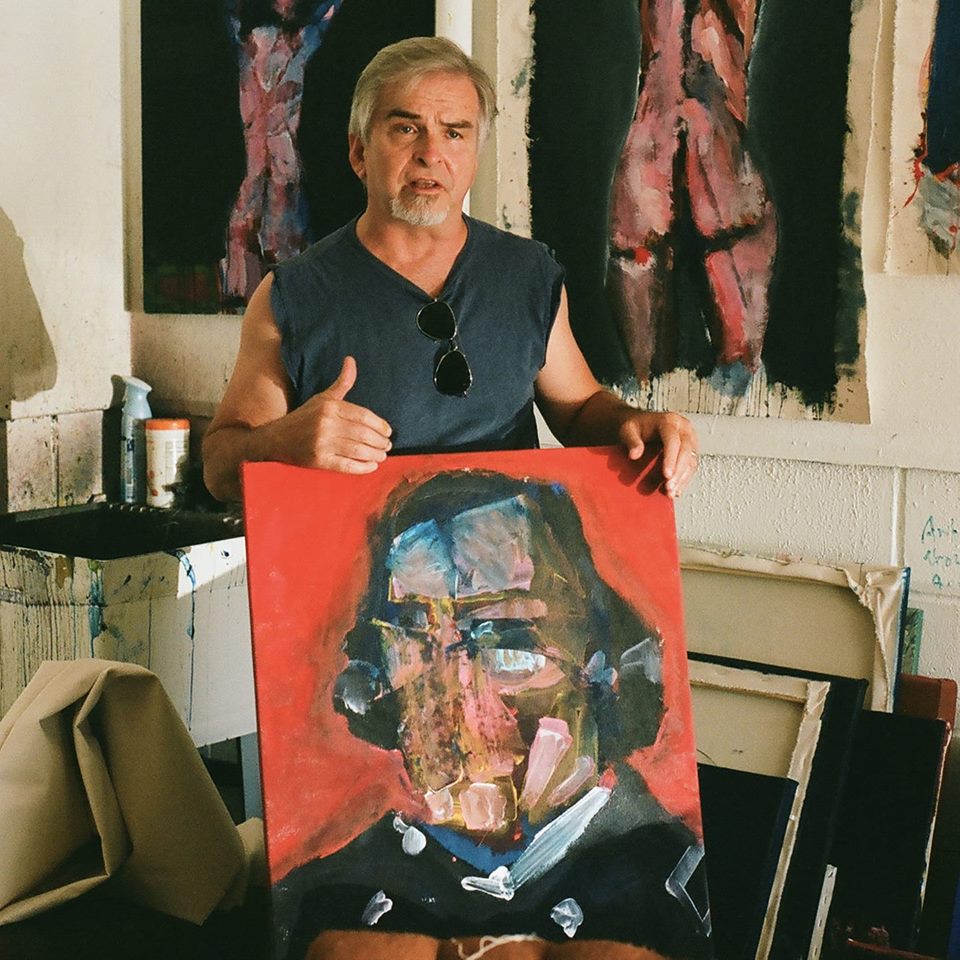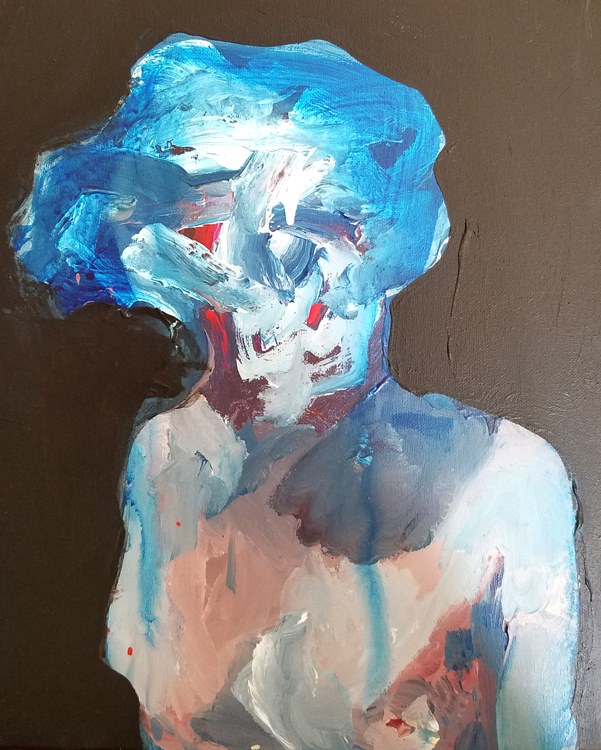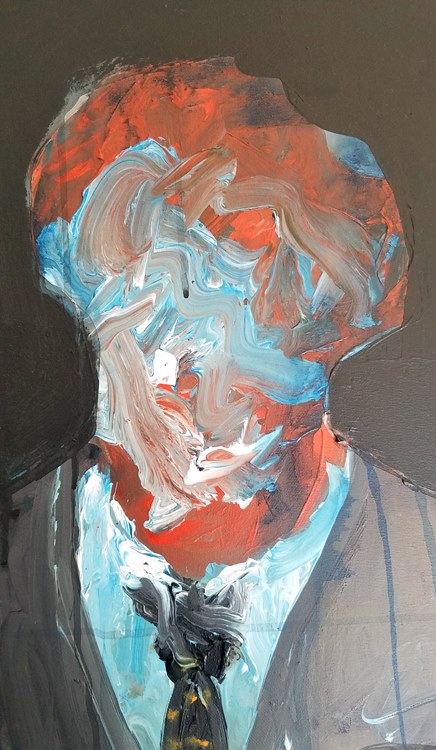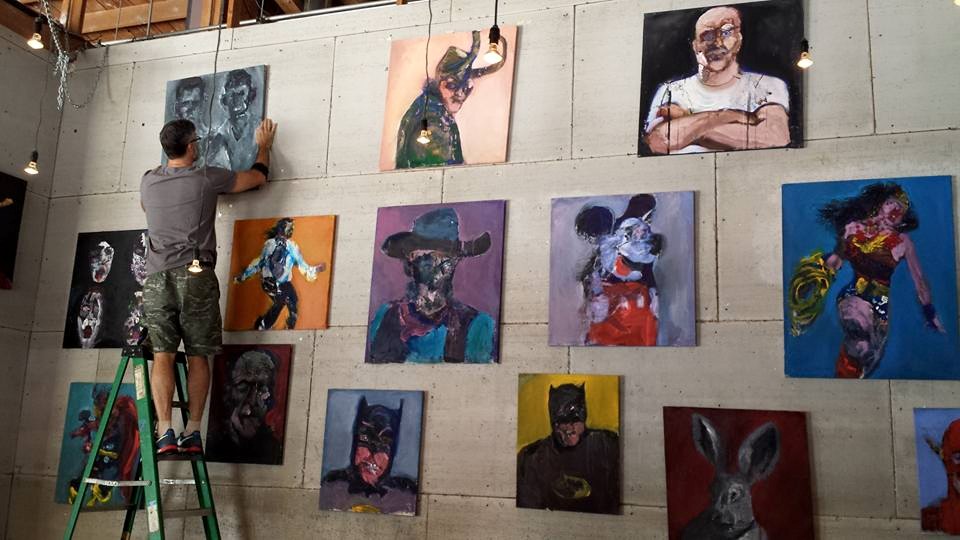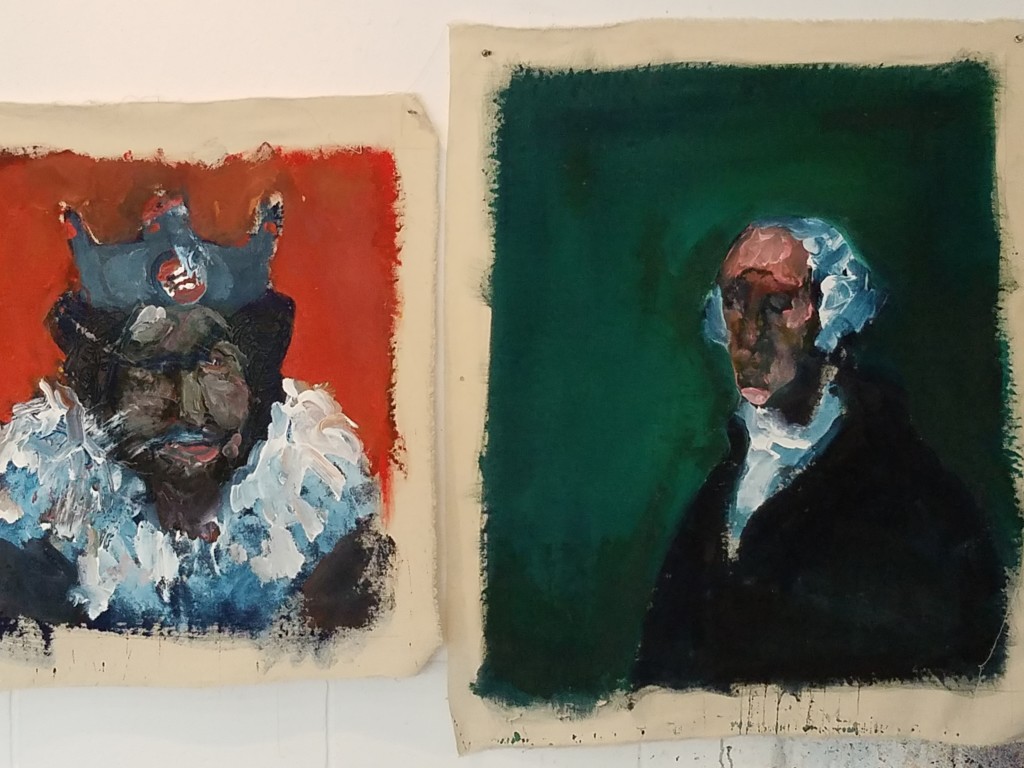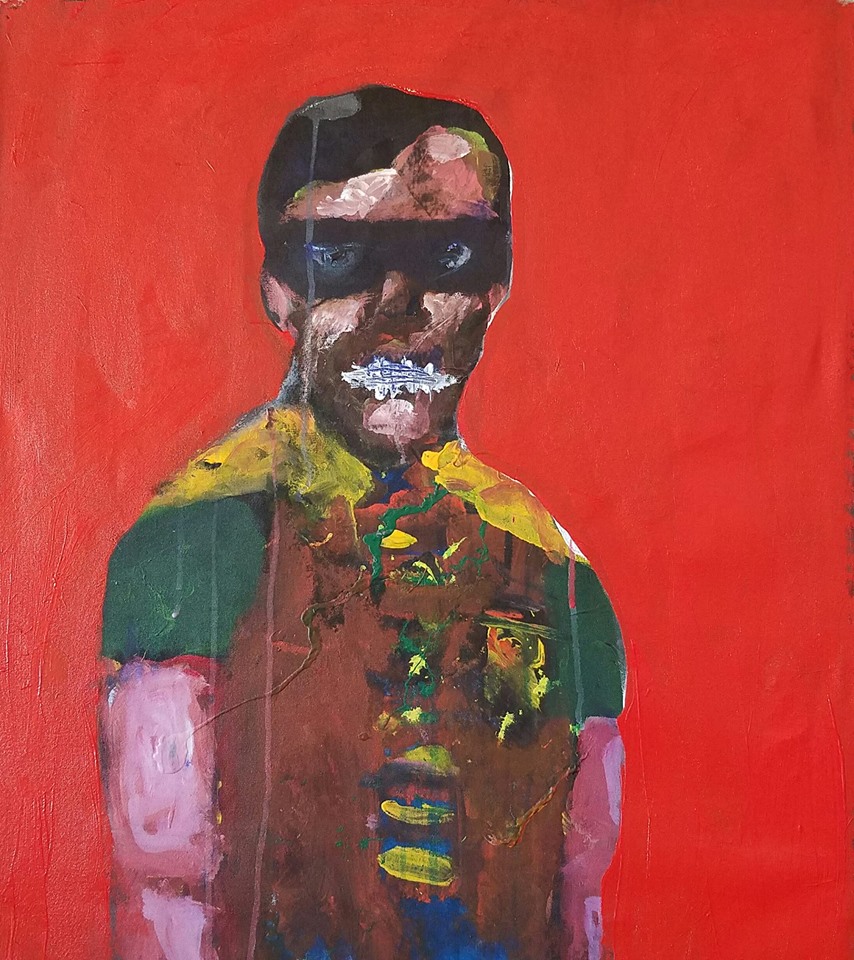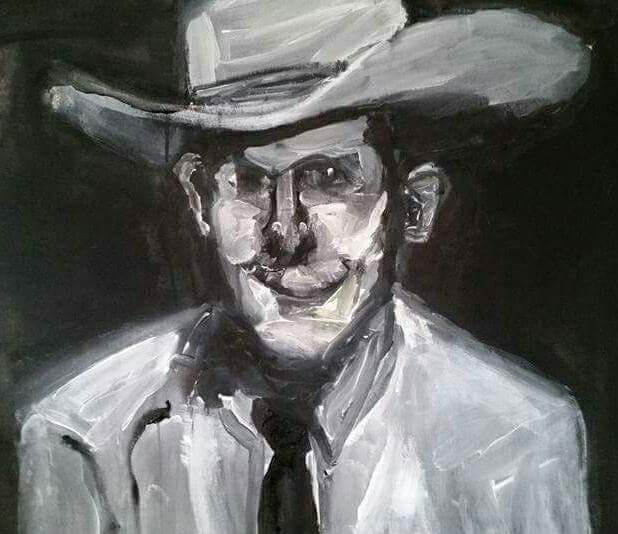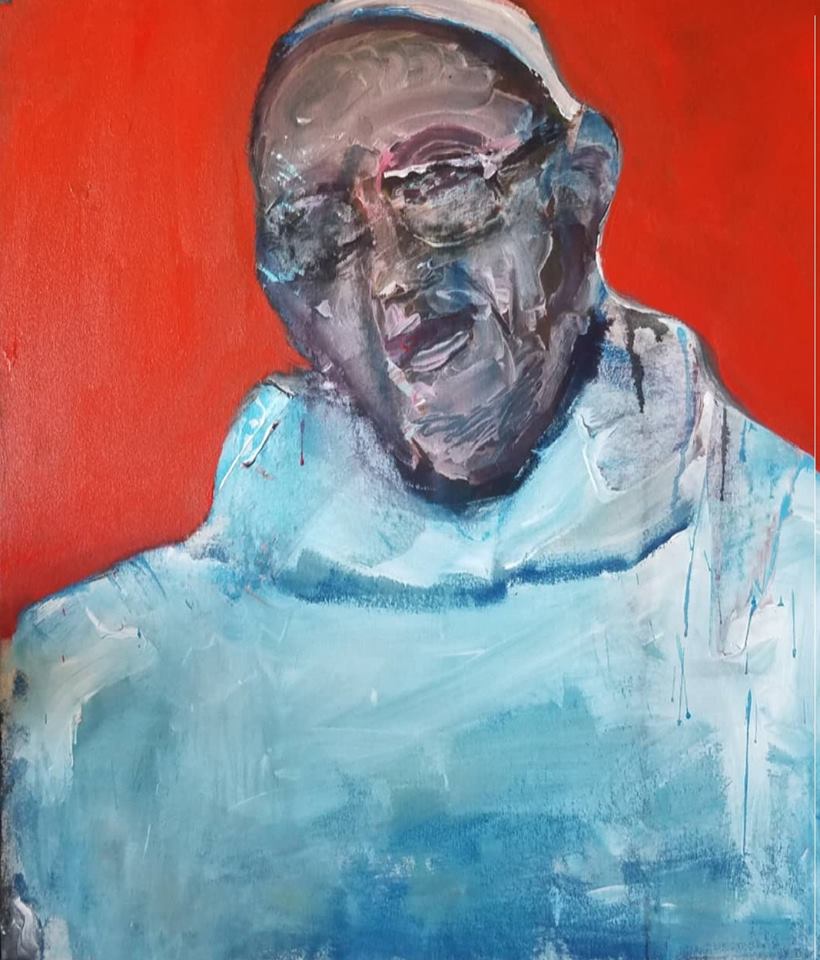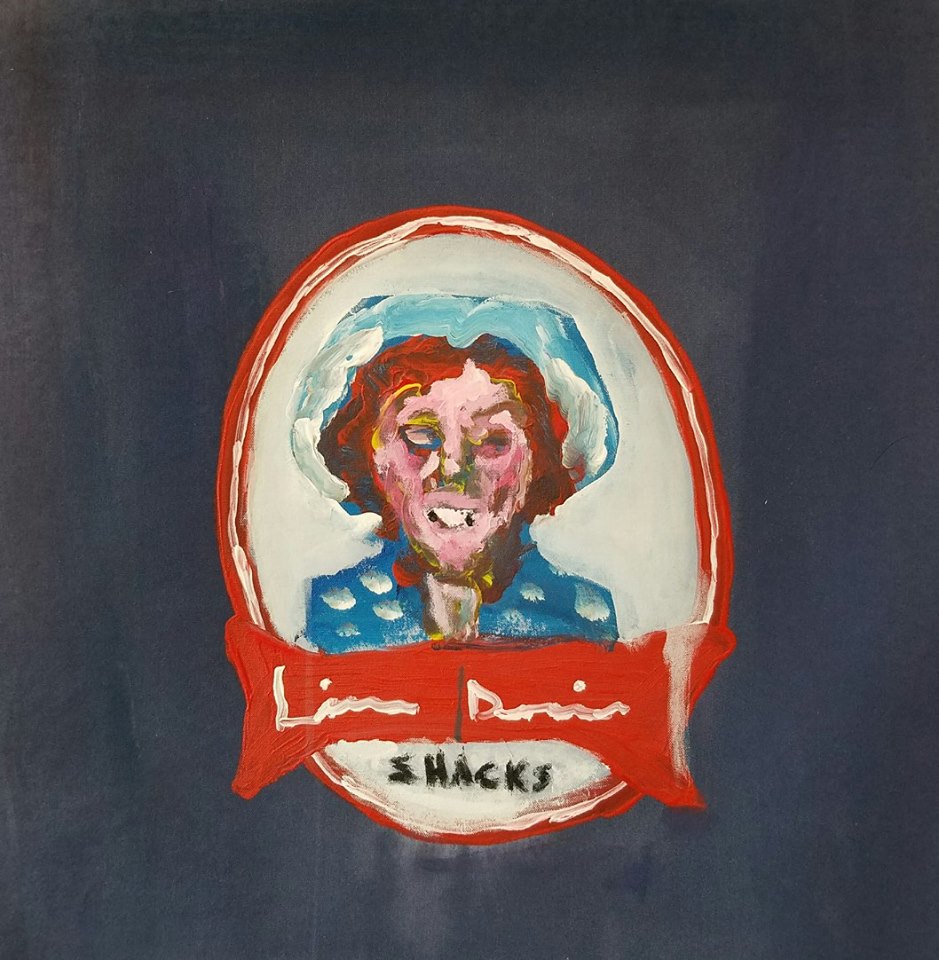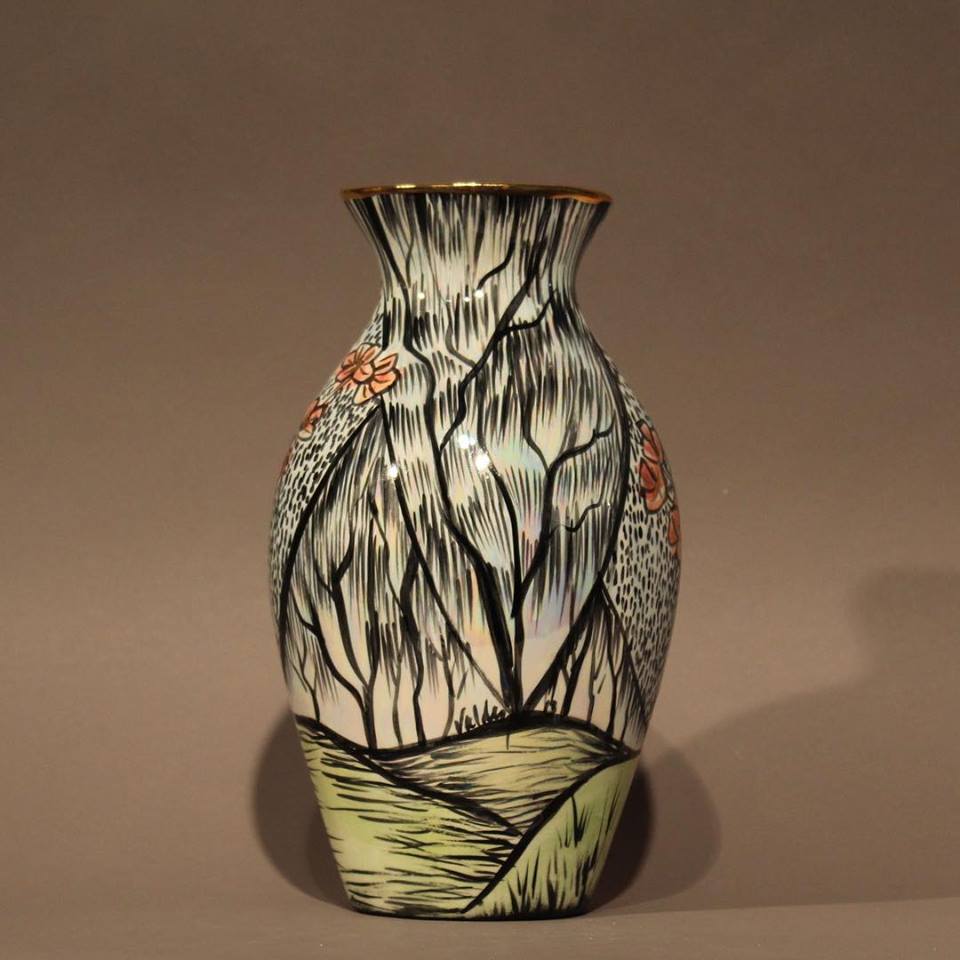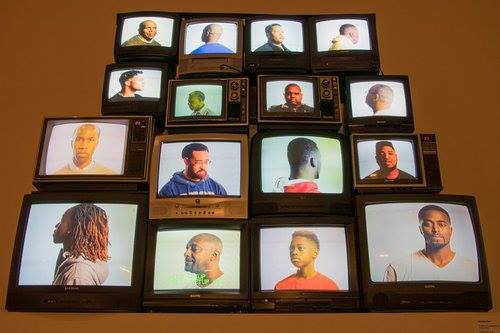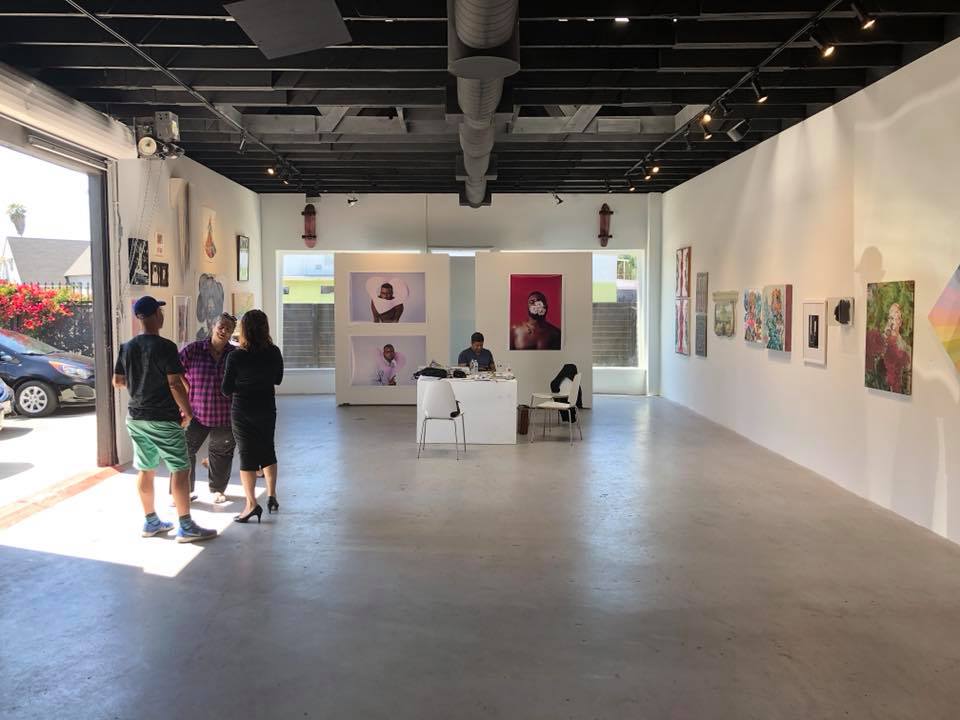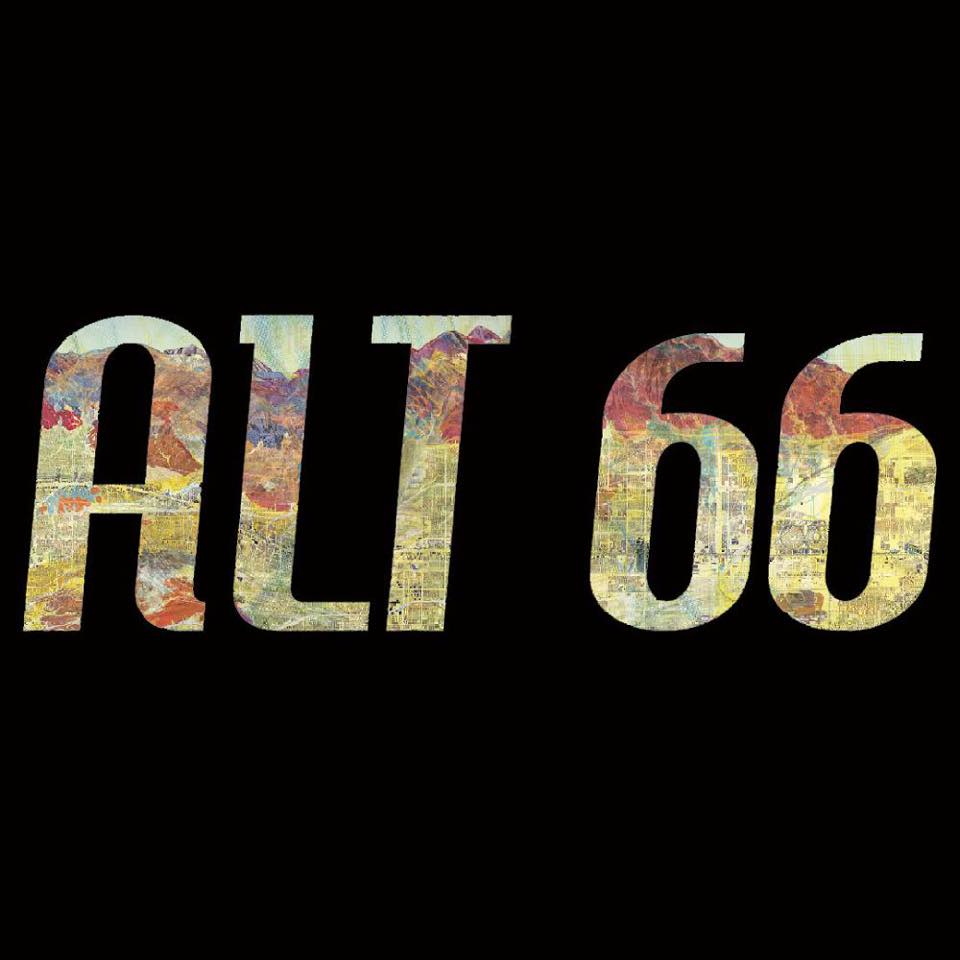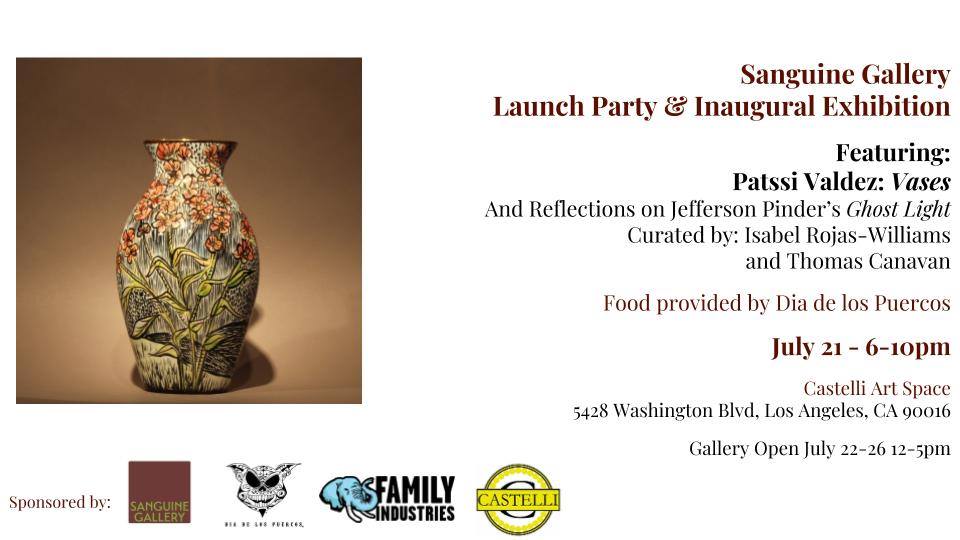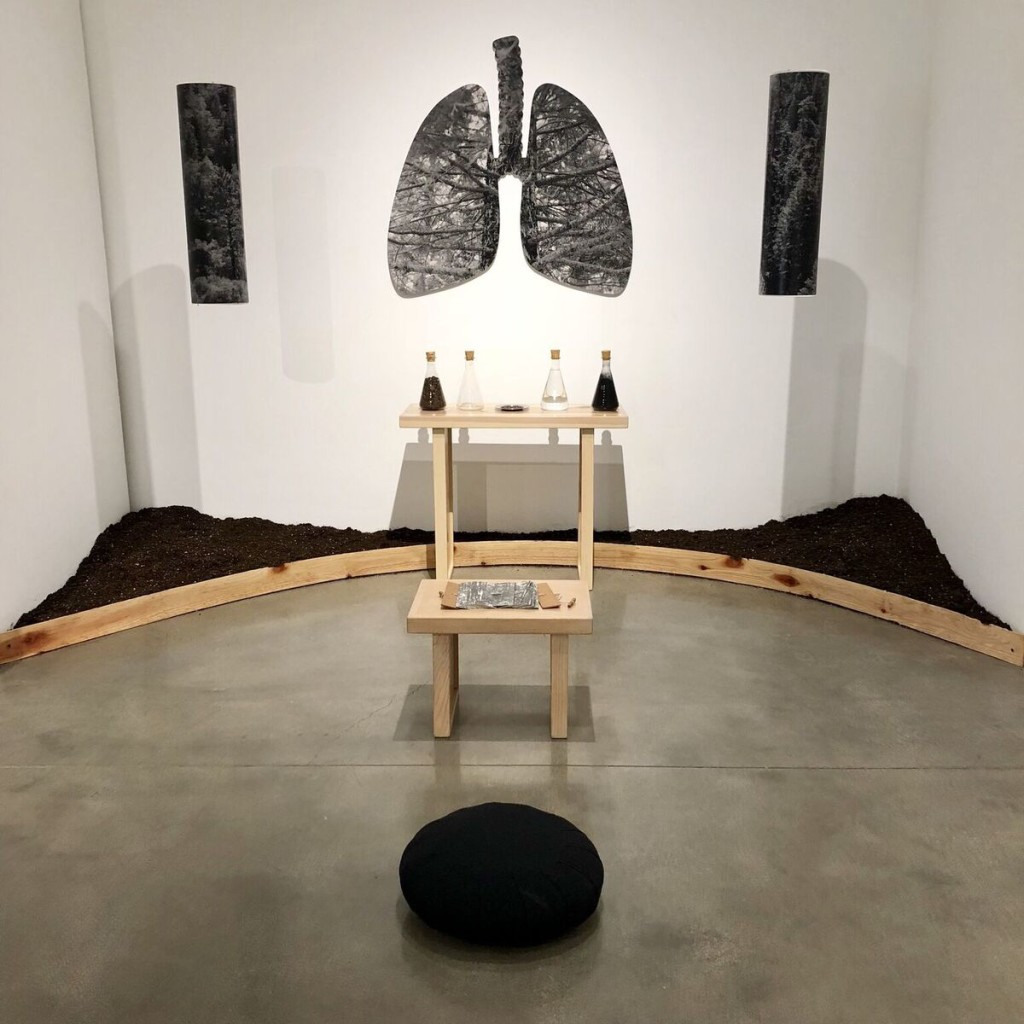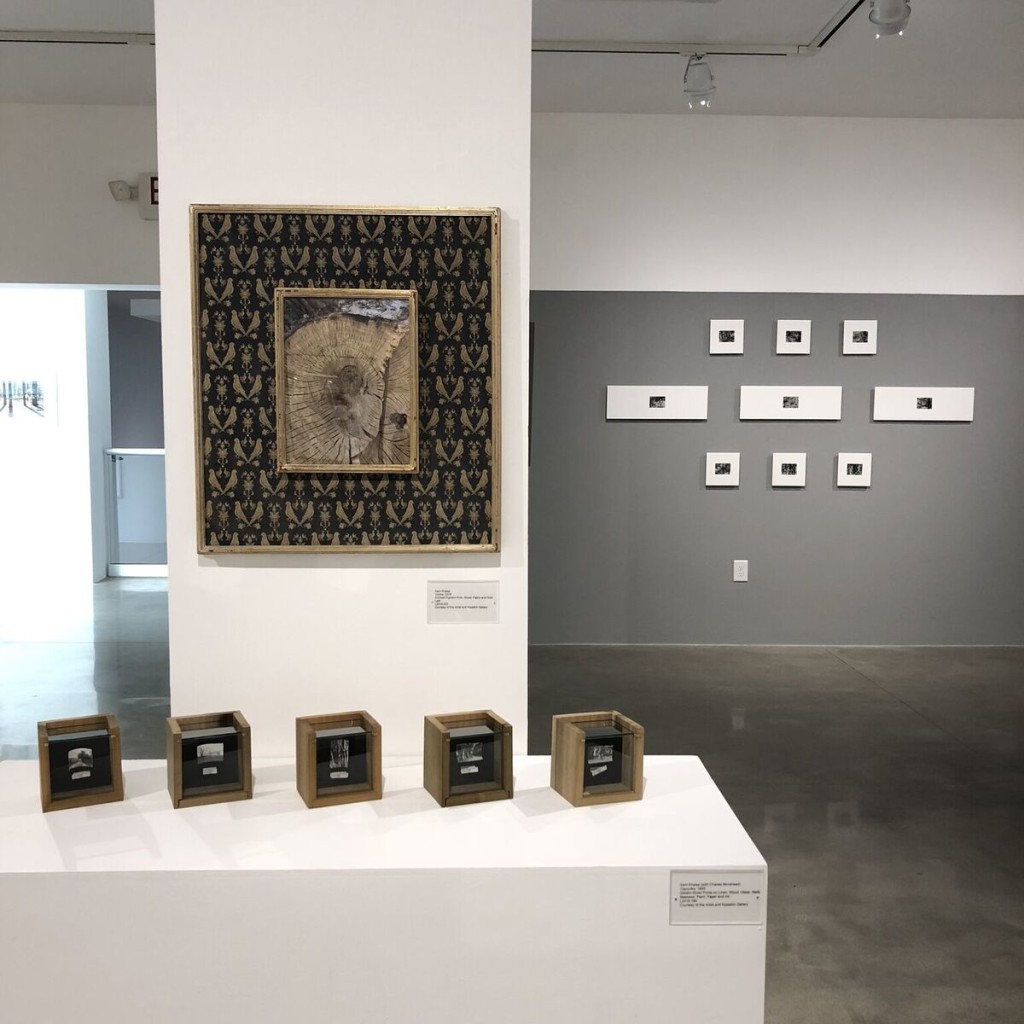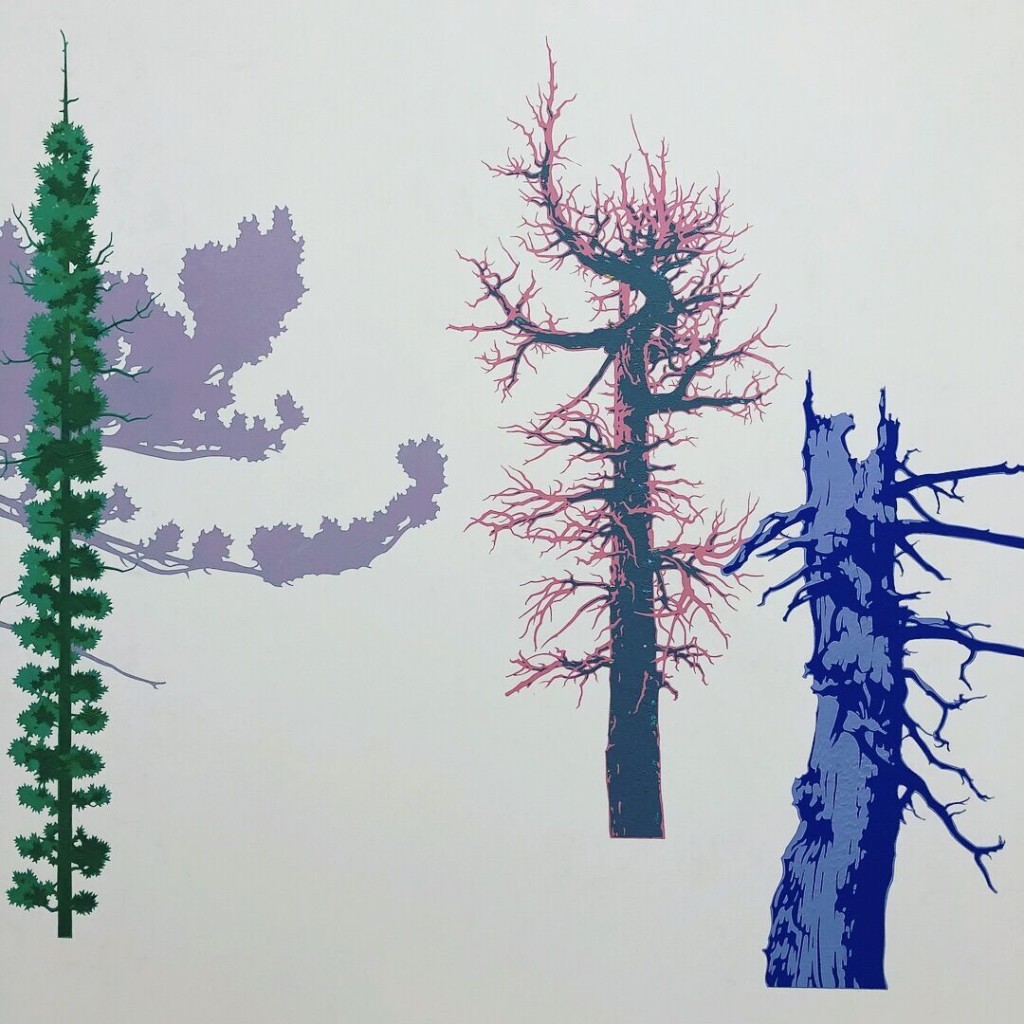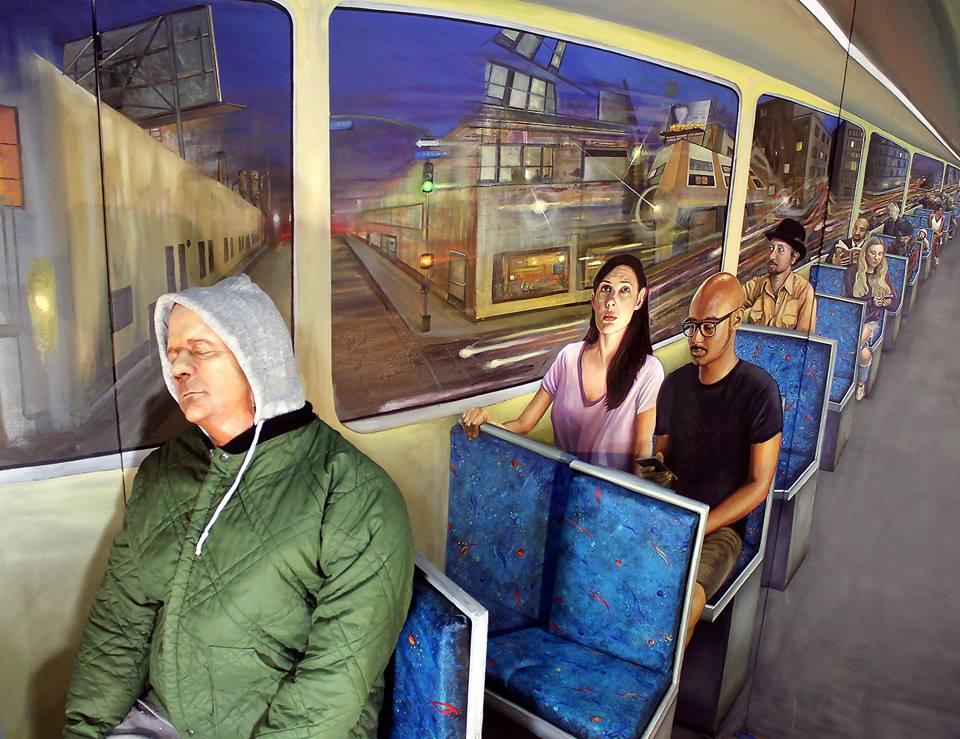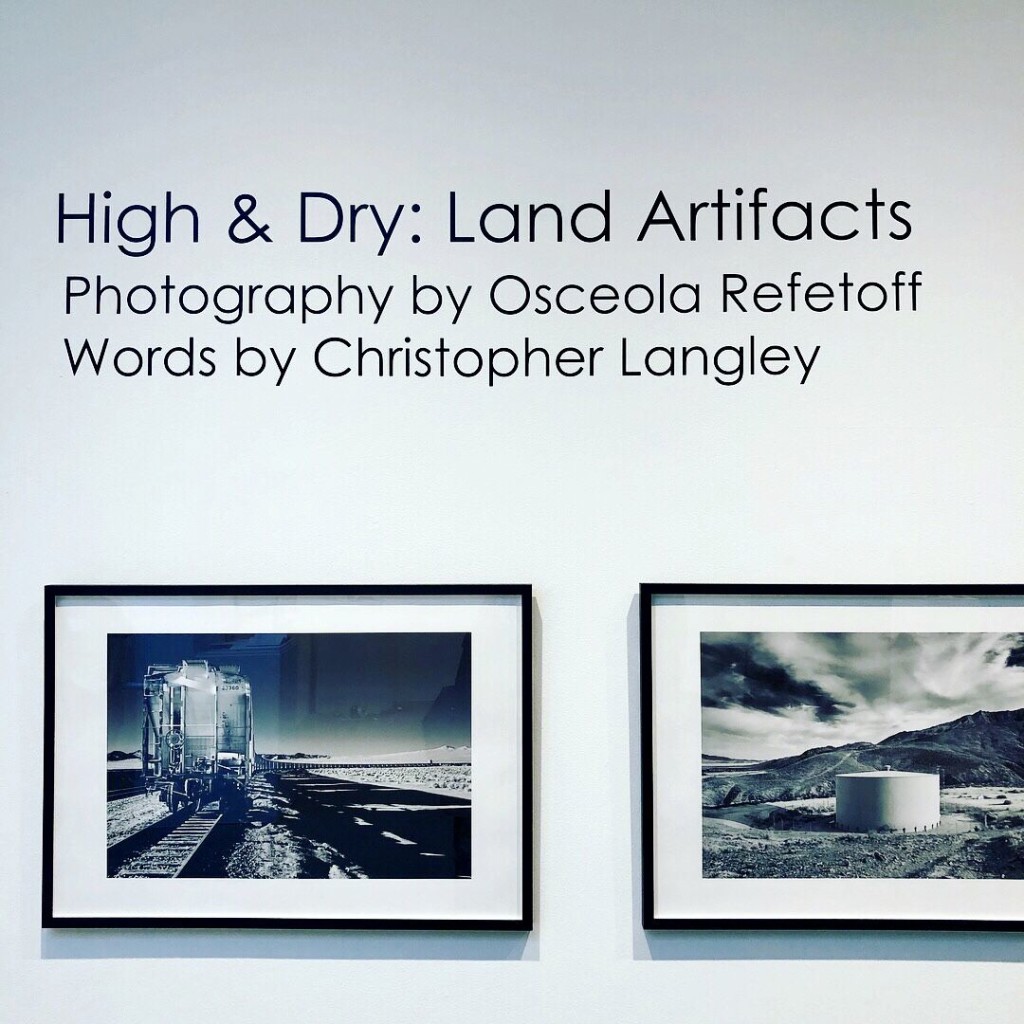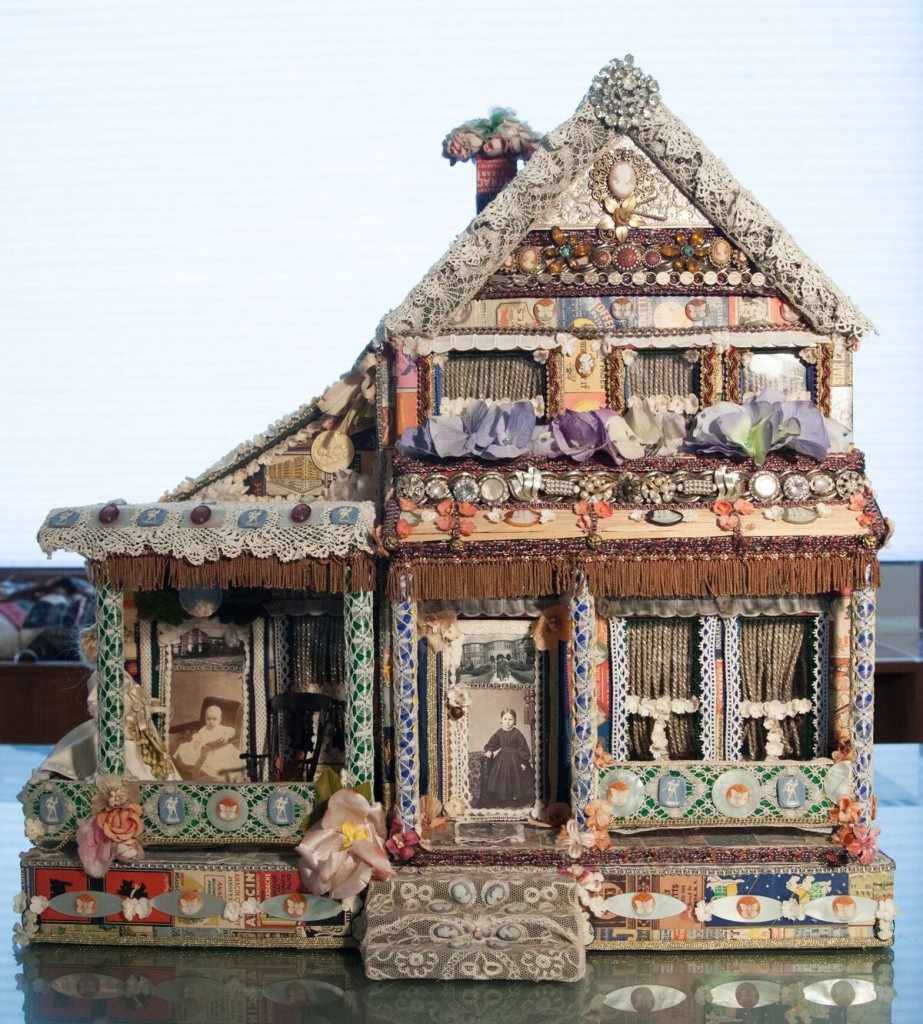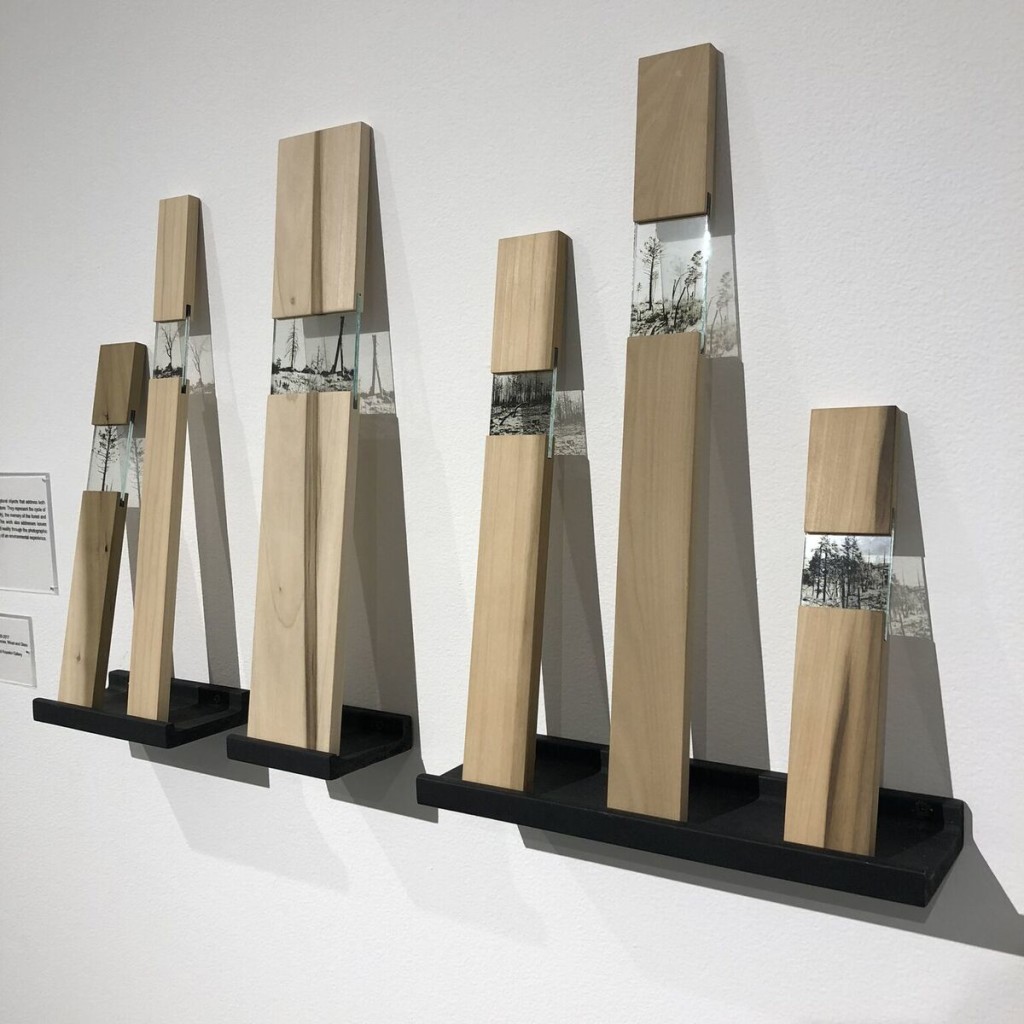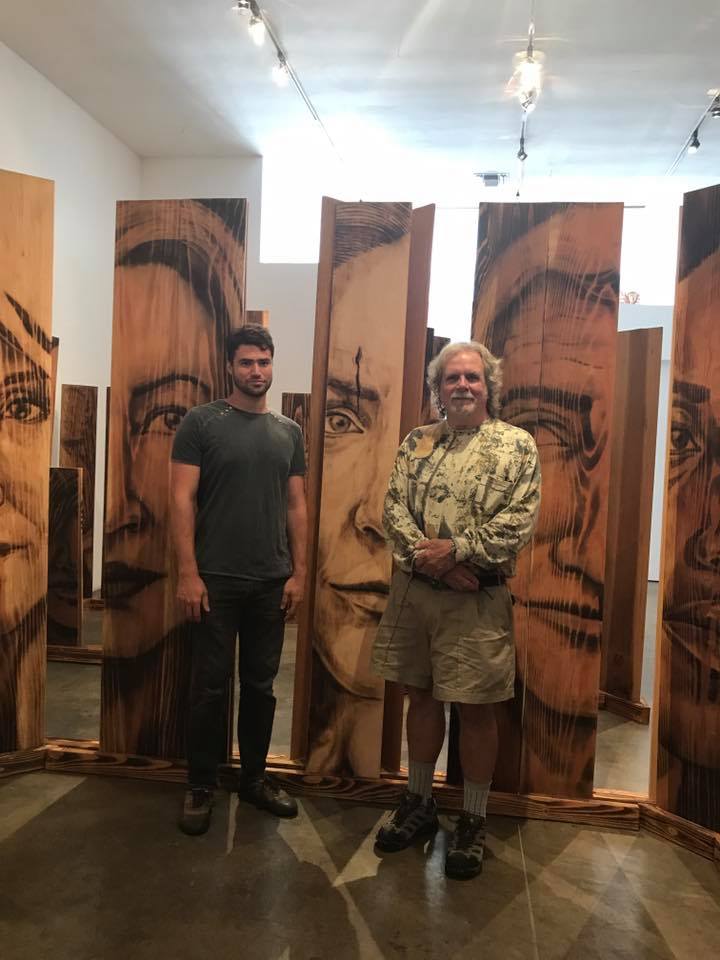What does it mean to be the “people’s jester?” Just ask dynamic artist and performer Larry Caveney, who says he plays that role in his work. “I report to the audience at the ‘king’s’ expense. The humor of my image lies in its juxtaposition from the normal. I offer myself as a focal point for which the audience can see their own exceptionality, and gain some immunity from the status quo.”
His wit is salient, his approach wide ranging. “By giving people permission to laugh at me, we enter into an allegiance, which is ultimately an opportunity for me to be suggestive, provocative, and to enact social intervention.”
When asked about his own work, Caveney starts with his performance art, rather than his painting. “In my performance art: as white male in the world or art world, we have a tendency to maintain our own position of power or that persona of power or youth, where in reality it’s lost to time and gravity. The piece speaks to that false facade. That’s why I use the idea of ‘the artist as fool’ in most of my work.” In other words, he adds “Basically I poke fun at my own self. As a white male, in this state of culture, I think that’s all I have to work with, that and humility.”
And humble he is. His extensive collection of portrait paintings are richly textured, excitingly abstract looks that evoke feeling as much as image.
“When you think about my portrait paintings, you first need to think about four-month-old babies,” he explains. “They can barely tell a circle from a square, yet they already know their own mother’s face. Meantime, an adult can pick out a face from nearly any angle, or in lousy lighting. It turns out the human mind has some serious hardware for recognizing faces. And this affects how we look at art.”
In short there’s a method and meaning to the blurred abstractions that often shape his portraiture.
“So what do we look at? When we’re four months old, it’s mostly mom. But when we’re adults, it’s mostly celebrities – mass media does a million-dollar job of constantly getting them in our face. That, along with facial recognition, is why we know them all by heart, and buy their stuff. So what does any of this have to do with my portraits? – Just ripping off Francis Bacon, right? Wrong. Bacon screwed up his faces for shock value. I’m after bigger game – I’m using Bacon-like moves to explore what happens when the shit of pop culture hits the fan of human face perception.”
None of which changes how incredibly prolific he is, or the sense of wonder and curiosity his portraits create.
He explains his process as going back to the days when he worked in a factory for ten years. “I acquired the habits of production through repetition on a daily basis on the assembly line. I also worked in the shipping, receiving and inventory departments which I acquired skills of habit there. All these working disciplines I see operating in my studio and wasn’t that conscious of it until recently.”
He has been making a painting a day since 2012. Think on that. 365 days in a year, 5.5 years of those days.
When asked how he chooses his seemingly endlessly broad range of images, Caveney says “After painting non-objective abstract, I now enjoy sharing those images that folks recognize and perhaps have some history with.” And, he notes “Some of my work is more allegoric or story-telling based on my personal past relationships.”
But how does he do it, day after day, creating these personas that we as viewers read into and define? How does he come up with the colors of his palette, somehow both moody and primary; the textured look, the swirled lines and shapes?
He is not one to be forthcoming with his creative process. “I don’t share processes in my work, and I like it that way. I share my work on Facebook. As soon as I finish painting I post it onto Facebook for potential sales. As a performance artist as well, I enjoy the immediacy of audience’s response; the Facebook connections satisfy me in this manner.”
Above all else, he explains that independence as an artist is his most essential goal. “To make, to sell with no intervention/dictating of the establishment. To have direct, immediacy with those who are interested in the work/object, which opens into a relational space…circumventing that sometimes isolating space, that the art-world can sometimes represent.”
With that in mind, for three years, he curated a show a month in his transformed two-car garage.
Always driven, inspired, and radical, Caveney’s work has changed over the years, but he can’t predict what’s ahead – or perhaps he wants us to see for ourselves.
“I went from painting to print making, to sculpting with a chainsaw, to performance intervention art, to video art, and back to painting and performance together,” he says.
It’s enough for us to know and see this arc, to be sure that it will continue to shift and grow. Caveney may describe himself as a jester, his work may well make us laugh with recognition and pleasure, but he causes contemplation along with entertainment, allowing us to define our own meanings, shape our own impressions of his art, and our world. Whatever he does next will be well worth watching.
He’s just turning it out, he says.
We should best tune in and watch his game unfold.
- Genie Davis; photos courtesy Larry Caveney; additional photos Shoebox PR, Genie Davis




